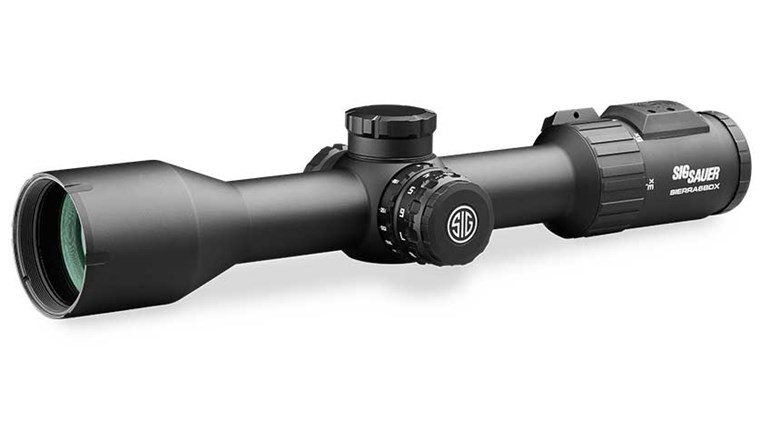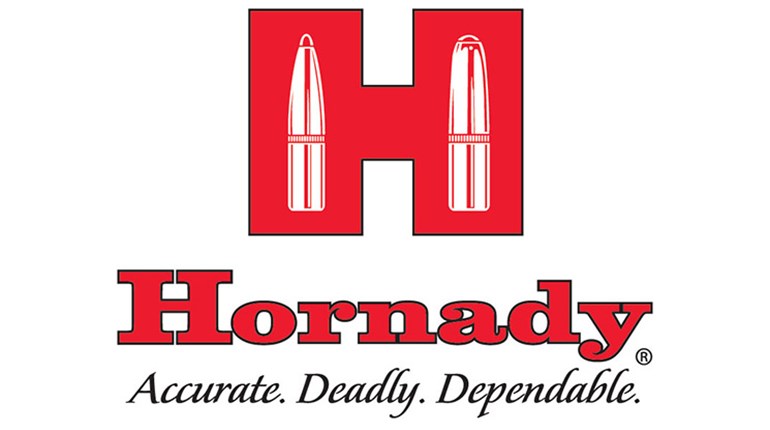
Years ago, when I was a new sniper, I was issued a nice .308 Win. bolt gun, given some training on fundamentals by other snipers and instructed to get "dope" on the rifle out to 800 meters. The rifle in question had been used by another sniper, so no break in was needed—just a good cleaning, slight adjustment to the scope for position and focus and I was on my way down a long and tedious road to gather information on where it would send a 175-grain Sierra Match King BTHP bullet at a variety of distances in multiple environmental conditions.
Every shot was noted in my data book so I would be able to accurately make first-round hits. Many days were spent on the range as I painstakingly tried to fire at least one group at every distance between 200 and 800 meters in 25-meter increments. Once this was completed, every time there was a significant weather change, more trips were needed to gather data in the new conditions. Did I get enough dope to be effective? Yes. Did I shoot every distance in every condition? No. But I had enough actual dope to fill in the blanks. It took a lot of time and ammo, and the data collection never really stopped.
Fast-forward to the present. For years there have been various ballistic software programs for PDAs, PCs and now smartphones. Now that I am retired, I have a renewed interest in the ballistic apps for a number of reasons. First, I had a professional curiosity about how well they worked. Second, time and ammo are both precious commodities, and my thought was to get the same data without burning through hundreds of rounds over the course of the year. Also, I needed to get some firsthand experience with these programs, as I have been running across more and more people who use them and they have asked for my opinion.
I made the leap into the 21st century, bought an iPhone and downloaded the Knight's Armament Corp. BulletFlight M (Military Version) app for $30 via iTunes. BulletFlight is pretty easy to use. There are a number of weapon and ammo choices pre-loaded into the app, and the various screens are easy to understand if you are familiar with ballistic terminology. If your specific gun and ammo load is not listed, simply add a new one. However, you will need accurate information about your gun, optic, ammo and environment. It takes much less time to enter the data than it does to gather it. Sight height above bore, muzzle velocity, ballistic coefficient, bullet weight, temperature, humidity, barometric pressure and altitude are all necessary information. Try not to guess at anything—the "garbage in, garbage out" rule is in effect.

I chose an almost new, but unfired gun to test the software. This simulated a new sniper needing to get usable data in the shortest amount of time scenario. My rifle was a Remington 700 Sendero in .300 Win. Mag. I bought it 10 or so years ago, mounted a Leupold scope, put it in the safe and left it there; never shot, but regularly fondled. Since my rich Uncle Sam provided me with quality guns and ammo, I seldom saw the need (or had the time) to shoot my own.
At the Range
Breaking in a new precision-rifle barrel is a contentious subject among snipers. I personally fall into the middle of the road for break-in technique, but I wanted to try David Tubbs Final Finish loaded ammo to see how it worked. I ordered a box, followed the instructions and the barrel was supposedly broken in and ready for zeroing within about 5 hours. Since I was following Tubbs' instructions, I hope to deflect conjecture about how effectively I broke in the new barrel.
I picked two Prvi Partizan loads to test, intending to select the better performing load as the one I would shoot from the gun most often. There is a lot of data on brand-name match ammo, and my thought was to see how well the program worked with what some might consider an unusual choice for long-range shooting. For comparison, I took a box of Winchester 190-grain match ammo that is identical to a load used by the military.
The initial 100-yard group with the Prvi Partizan 165-grain Pointed Soft Point moving at 2,800 fps was disappointing, measuring some 2.5 MOA. The 150-grain Soft Point at 3,232 fps was much tighter at about 1 MOA, and the Winchester 190-grain at 2,922 fps was sub-MOA, which was to be expected.
I decided to shoot the Prvi Partizan 150-grain load since it had the better of the two groups. I confirmed the 100-yard zero and slipped the turret on the Leupold Mark 4 4.5-12X scope, then entered the data into the KAC BulletFlight app along with the environmental data provided by a Kestral 4500NV. The only data of which I was not positive was the ballistic coefficient (BC). Internet research led me to believe the bullet had a BC of .310. One of the utilities on the BulletFlight program determines the BC based on velocity and drop between two distances. This is a handy feature, and it calculated a BC of .303.

I then moved to the 400-yard line and chose "Calculate Simple" on the app. I spun the wheel to 400 and the program automatically adjusted the readout to show bullet impact relative to line of sight. Based on the data I provided, the round would drop 23.2 inches. It also gave me the number of clicks (22) based on .25-MOA turrets. After adjusting the parallax, I added 22 clicks of elevation and fired a round at a 10-inch steel plate. There was a resounding ting as I watched the little plate swing in the distance. Splash showed an impact on the bottom edge at 7 o'clock. The next shot again hit the edge, but at 5 o'clock. I brought the elevation up 4 clicks (1 MOA, or 4 inches) and fired three more rounds. They were spread from center to the 3-o'clock edge. Not bad for cheap ammo and a $30 program.
The Calculate Simple option is, as the name implies, simple. Turn the wheels on the touch screen to the nearest 25-yard range, select wind speed and direction and use the data displayed to make your shot. The Calculate Ballistics option is more precise—enter the exact range to the target, wind speed and direction, update or change the environmental conditions as needed (including the shooter-to-target angle) and the required adjustments are shown at the bottom of the screen. The angle can also be entered into the app for use with Calculate Simple, making it very useful for High-Angle shooting.
Another neat feature is the app's ability to use your location to get the current weather. Once this option is chosen, you can use local weather to replace the data stored in the app. Using a meter like the Kestrel is more accurate, but for those who don't have handheld weather stations, this is more useful than guesstimating.
Longer Ranges
A few days later, after the bore was thoroughly cleaned, I returned to the range to try the KAC BulletFlight data at moderate distances. I placed 18x 36-inch steel targets at 500, 600 and 700 yards, updated the environmental data (which had not changed much) and spent a few minutes observing the wind. There was a 5 mph gusting to 13 mph wind that repeatedly shifted from 5 o'clock to 8 o'clock. Wind holds were computed by both the BulletFlight program and my spotter's experience. The BulletFlight hold was heavier than what my spotter and I figured. Shooting at the 500 yard target, the cold-bore shot impacted low and right, about 1.5 MOA from center. This was fired with a wind call that split the difference between what the program stated and our manual calculations. The next four rounds were spread horizontally across the center of the target, with a 1.5-MOA spread for elevation. Two of these rounds were fired using BulletFlight's wind call and the others with my spotter's calculations.

The five rounds fired at the 600-yard target had a little more vertical spread (2 MOA), but were all downwind of center. My assessment was the BulletFlight wind call was accurate at the heaviest wind from 8 o'clock, but given the changing speed and direction, it was sometimes too heavy. Conversely, our call was a little too light.
The best group was turned in a 700 yards. One round was called low, three rounds landed within 1 MOA of center, and one round slipped off the right side of the target due to an unspotted strong gust of wind.
Total time to check dope at 500, 600 and 700 yards was just less than 3 hours, including set-up and breakdown of the targets. So after a total of 8 hours of range time, and expending only 40 rounds ammunition, I feel confident in being able to engage a man-sized target out to at least 800 yards with the Sendero and the Prvi Partizan ammo. This included firing three, 10-round groups of each tested load through a chronograph to get muzzle velocity, several rounds to confirm a 100-yard zero and four bore cleanings.
I dialed every range onto the turret to be as accurate as possible, but the BulletFlight app also displays mil holds or MOA drops, depending on what the user chooses—using holdovers or holdunders is not a problem. Keep in mind, for this app to be fully effective beyond 300 yards, a scope with target turrets and a modern mil-scale or an MOA reticle is recommended. I entered data for a Browning A-bolt in 7 mm Rem. Mag. with a Leupold VX-II scope, and was limited by both the duplex reticle and the adjustments (no clicks, just .5-MOA tic marks, and no way to tell how many rotations I had made).
Without a doubt, the KAC BulletFlight app works as designed. It is definitely worth the $30, and I recommend it for anybody who has an iPhone, iPad, iPod touch or Android and wishes to shoot beyond 300 yards. While BulletFlight's adjustments were very close to reality, there is still the need to shoot as many different ranges as possible, in as many different environmental conditions as you can, so the data can be verified. Considering the program can only be as accurate as the data entered and the BC for the Prvi Partizan ammo may not have been exact, I was very satisfied with the results.
But I still wrote everything down at the range, because the batteries in my databook never die.





































